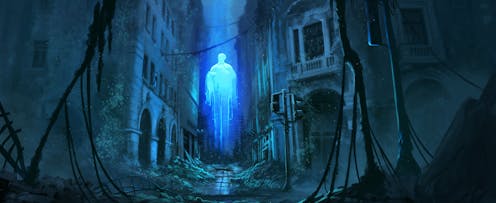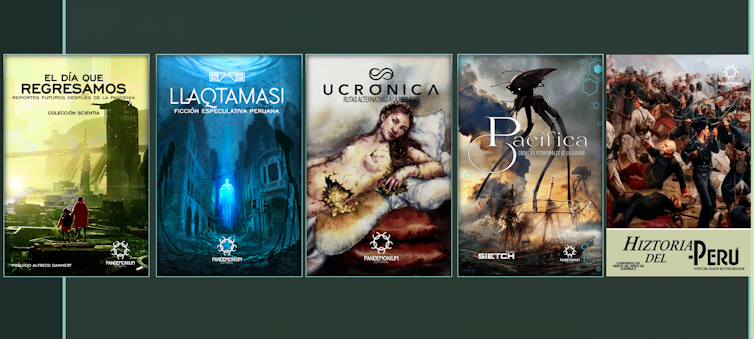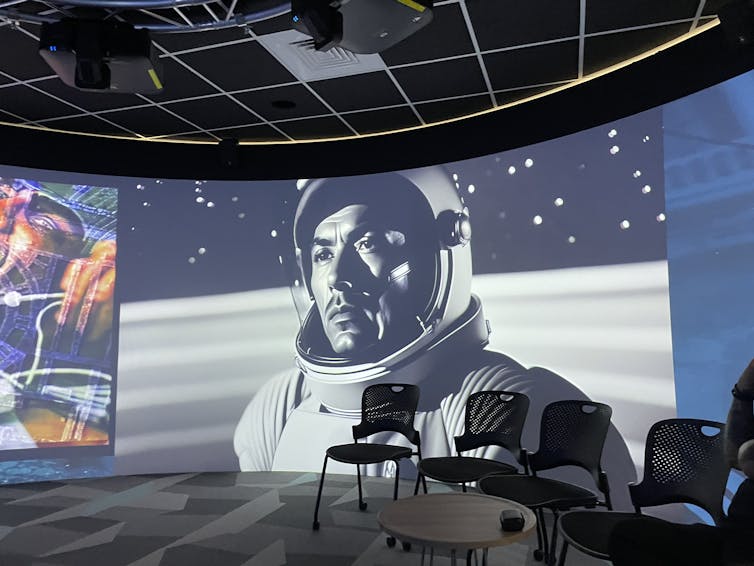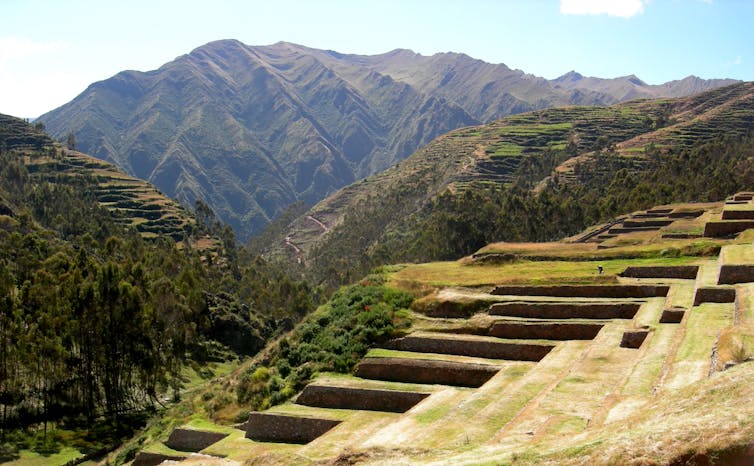
The Aymara people of the Andean Highlands speak of “qhipa pacha,” a phrase that refers to the future as a direction one walks to backward. They believe in looking to the past as a way to understand what may come next.
Last year, 13 Peruvian writers launched the Qhipa Pacha Collective, a literary initiative which “aims to recover the memory of our original peoples to build possible worlds.” These writers imagine futures that reflect Peruvian ideas and concerns about their past and present.

My teaching and writing focuses primarily on Peruvian literary history and realism, a style that has been predominant since the 19th century. Recently, I’ve grown interested in Latin American writers who explore an imagined future through speculative fiction.
This approach isn’t simply science fiction written in Spanish and set in Peru. It’s a genre rooted in respect for both Peru’s ancestral memory and attention to present-day societal issues.
Writing to mirror society
In Spanish, the verb “especular” relates to optics, such as a reflection in a mirror. As in English, it also means to speculate – or observe the world attentively and think about it inquisitively. Both meanings inform the term “speculative fiction.”
Speculative fiction is a broad field that encompasses works of fantasy such as “The Lord of the Rings”, horror like “The Exorcist,” the supernatural as in “Stranger Things,” dystopia such as “The Hunger Games” and science fiction like “2001: A Space Odyssey.” Often, speculative genres have been considered escapist or not serious. Yet, when addressing social, political, economic and climate conflicts and projecting them into the future, speculative literature offers a new way to understand the consequences of the past and the concerns of the present.
Futurism is also a type of speculative fiction. At the center of Peruvian futurism are characters of Spanish, Indigenous and African descent. The stories feature Native technologies like quipus or “talking knots”, an ancient system for recording and transmitting information, and “andenes,” or agriculture terraces. They highlight Inca beliefs about the natural world and astronomy.
In such works, fantasy ceases to be an evasion of reality and becomes a critical reflection of our relationship with the world and ourselves, writes César Santivañez, the editor of a collection of Peruvian speculative fiction, in the prologue of the book.

Fiction grounded in Peru’s history
In 1843, Julian del Portillo published two serial novels that imagined the cities of Lima and Cuzco 100 years into the future. But modern Peruvian futurism stories offer more than science fiction starring Peruvian characters or places.
Sarko Medina’s “Microleyenda” tells of a golden condor suspended in flight in outer space while it holds a sphere of gold in its claws. The sphere contains our universe. The condor is one of many animals floating in space, each safeguarding one sphere containing one universe – until the day thieves appear to steal and replace the spheres with replicas.
Medina’s story was inspired by the golden garden in Coricancha, the Temple of the Sun in Cuzco, which was looted by Spanish conquistadors in the 1530s. “Microleyenda” fiercely criticizes the boundless ambition of the conquistadors who looted the Incan empire.
In Daniel Salvo’s story “El primer peruano en el espacio,” a brilliant Andean engineer confronts his captain aboard a space base orbiting Earth, questioning the intentions of those he calls “whites” who, like his captain, intend to dominate his race. Salvo’s work reads as a story of class struggle and ethnic and racial discrimination that mirrors the tension between the white residents of Peru’s dominant urban centers and the Indigenous people of the countryside. This story reflects a social problem of Peruvian society that begins in the colonial era and reaches all the way to the present and on into space.

Medina’s and Salvo’s stories are part of a collection that includes other Peruvian authors who write about a dystopian future in Peru. Also included are Daniel Collazos’ “Dependencia Programada,” Tanya Tynjälä’s “Miraflores,” Luis Apolín’s “Ledva,” and stories by Tania Huerta and Sophie Canal, among others.
These authors side-step the traditional science fiction focus on the technological progress of human society to explore the consequences of limitless dependence on digital tools. How does the human race and the natural world survive when racism and discrimination continue despite technological and scientific advances?
The future arrives for everyone
Peruvian futurism is rooted in the Global South. Much classic science fiction from the United States, in contrast, imagines a future mostly starring Caucasian heroes and Western technologies. The Collective is committed to writing Peruvian literature that does not imitate or replicate these norms.

On the website Future Fiction, an editorial project to explore the diversity of the future, Italian science fiction writer Francesco Verso reminds readers that “we all tell ‘tomorrow stories’” and that the future arrives everywhere and for everyone, not only for those living in developed societies.
Peruvian futurism writers are putting those words into practice and helping broaden our view of what the future could be.
Rocio Quispe Agnoli does not work for, consult, own shares in or receive funding from any company or organisation that would benefit from this article, and has disclosed no relevant affiliations beyond their academic appointment.
This article was originally published on The Conversation. Read the original article.







